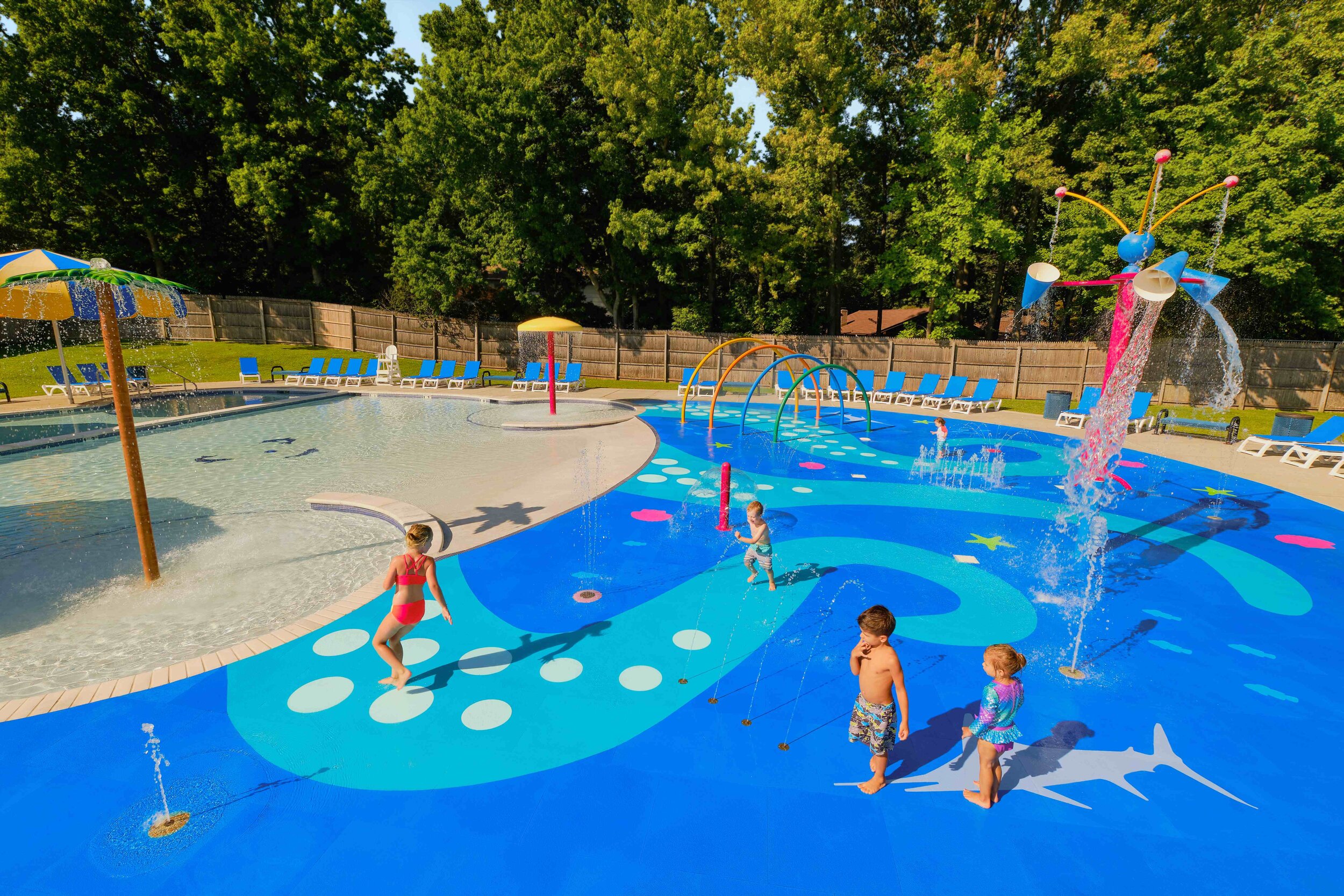The versatility of Life Floor’s design options provides an opportunity to create truly iconic aquatic spaces. While some clients opt for simpler designs using our preconfigured Patterns, many Life Floor projects are custom. Our team has spent over a decade building a process to accommodate these unique installations and we recommend initiating project-specific discussions as early as possible.
GETTING STARTED ON UNIQUE DESIGNS
Some clients and design partners create their own designs entirely in-house while others utilize our Studio Team’s complimentary design services. To visualize possibilities for specific projects, our team generates 2-3 concepts after receiving scaled plans and general design guidelines. Our team can also facilitate a hybrid approach to optimize pre-existing designs using our established best practices. For custom projects, contact us as soon as possible to streamline the design and quote processes.
OPTING FOR PRE-ESTABLISHED THEMES + PATTERNS
For rough budgetary estimates on non-custom projects, we recommend contacting us for a copy of the Life Floor Budgetary Guide, which features pricing for our Themes and Patterns. These designs have been curated to represent the most popular color and shape combinations requested by customers and designers.
TYPICAL PROJECT TIMELINE
It takes around 12 weeks from the start of the design process to the shipment of tiles from our U.S. manufacturing facility. While times vary by project, the following phases can be referenced for planning estimates:
Design Phase
2 weeks after scaled site plans are received by our Studio Team
Material + Labor Quote
1-2 weeks following design approval
Manufacturing Production
6-8 weeks following quote approval
CONTACT US
To initiate a new project or to discuss an existing project where Life Floor has been specified, please contact us. For additional design resources, please visit the Studio Section of our website.









